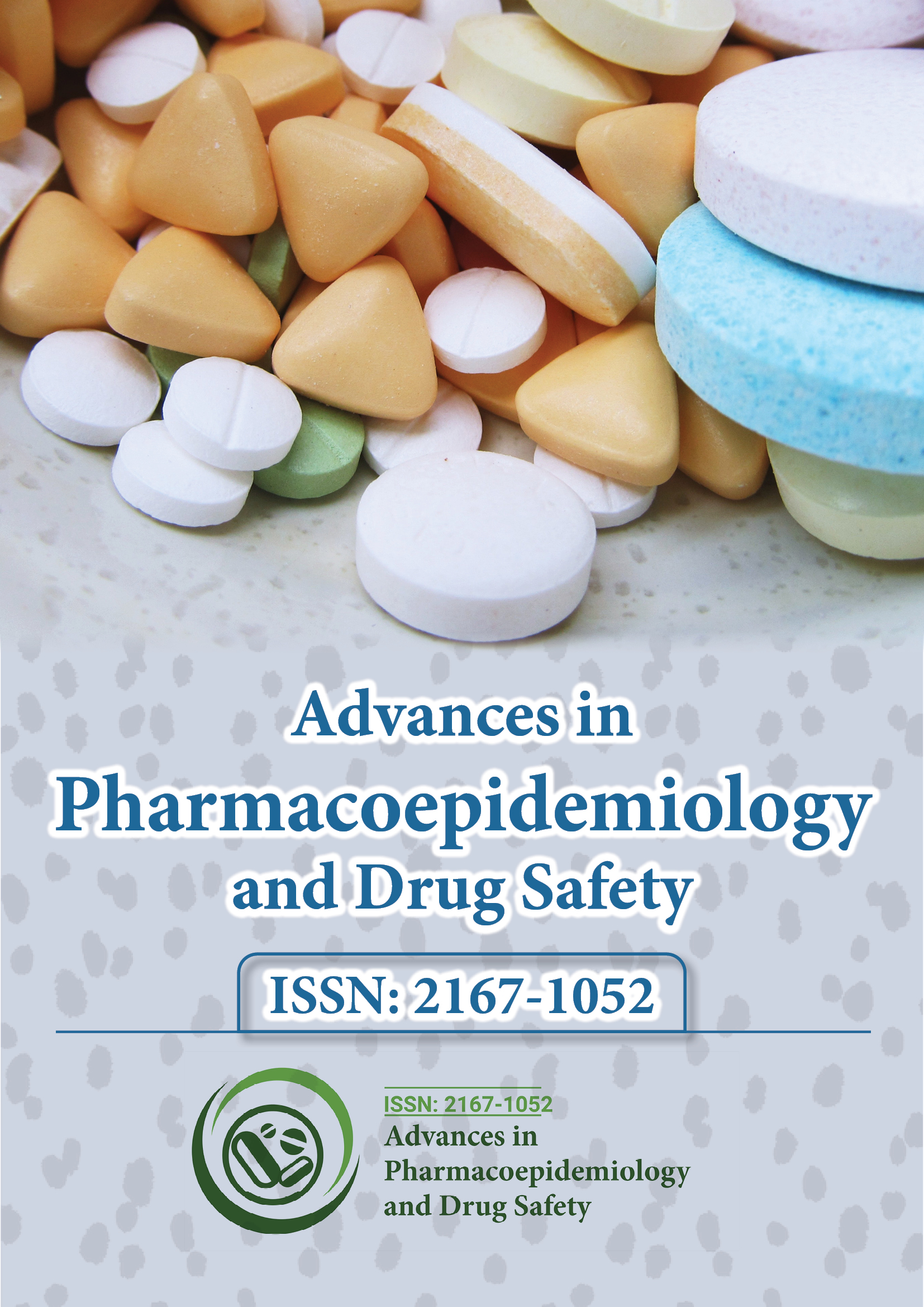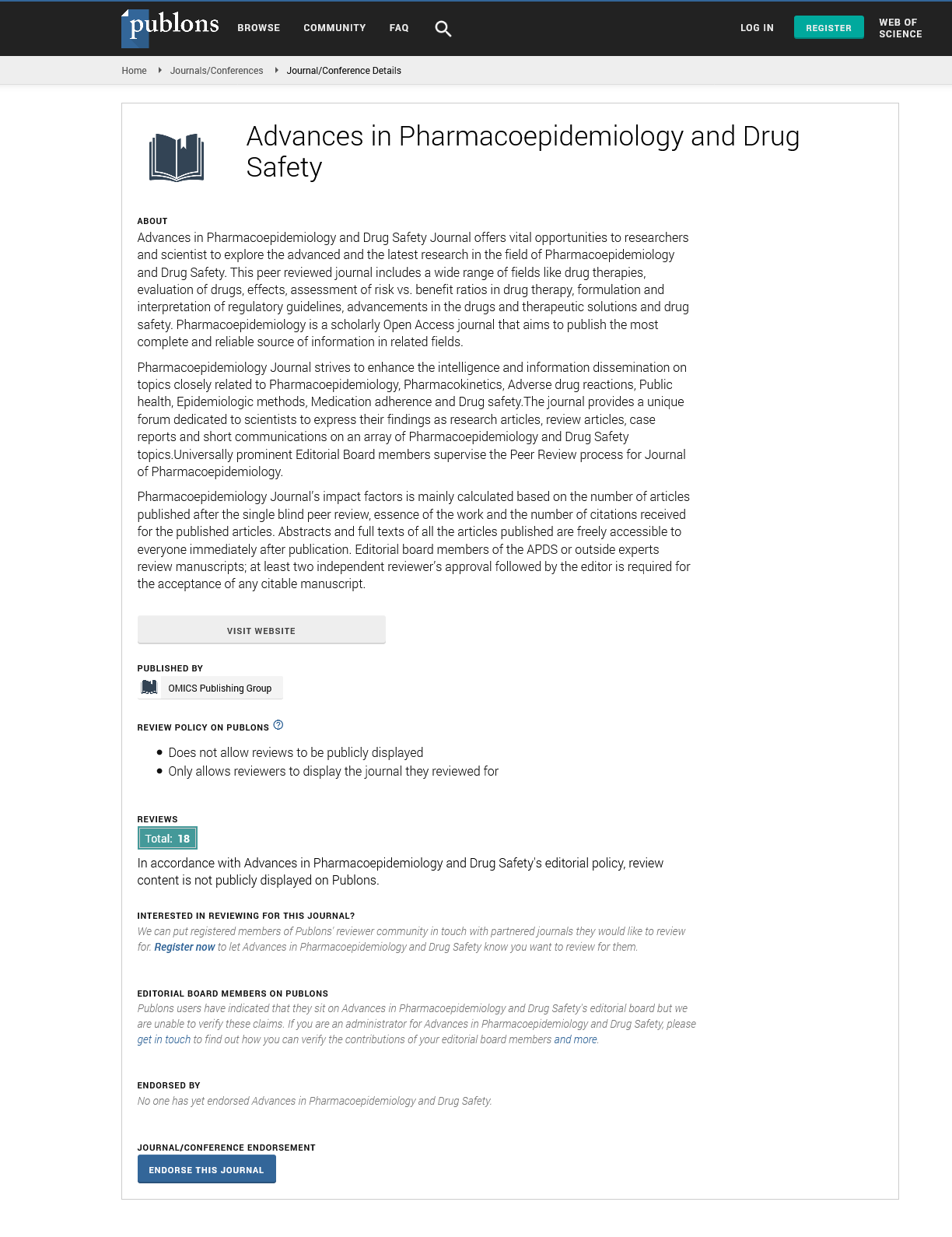Indexed In
- Open J Gate
- Genamics JournalSeek
- Academic Keys
- JournalTOCs
- RefSeek
- Hamdard University
- EBSCO A-Z
- SWB online catalog
- Publons
- Geneva Foundation for Medical Education and Research
- Euro Pub
- Google Scholar
Useful Links
Share This Page
Journal Flyer

Open Access Journals
- Agri and Aquaculture
- Biochemistry
- Bioinformatics & Systems Biology
- Business & Management
- Chemistry
- Clinical Sciences
- Engineering
- Food & Nutrition
- General Science
- Genetics & Molecular Biology
- Immunology & Microbiology
- Medical Sciences
- Neuroscience & Psychology
- Nursing & Health Care
- Pharmaceutical Sciences
Perspective - (2025) Volume 14, Issue 2
Long Term Safety Monitoring of Biologic Therapies through Pharmacoepidemiology
Lucas Pereira*Received: 29-May-2025, Manuscript No. PDS-25-29860; Editor assigned: 31-May-2025, Pre QC No. PDS-25-29860; Reviewed: 14-Jun-2025, QC No. PDS-25-29860; Revised: 20-Jun-2025, Manuscript No. PDS-25-29860; Published: 28-Jun-2025, DOI: 10.35248/2167-1052.25.14.398
Description
Biologic therapies have revolutionized the treatment of numerous chronic and immune-mediated conditions, including rheumatoid arthritis, inflammatory bowel disease, psoriasis and certain forms of cancer. While clinical trials have confirmed the efficacy of these drugs in controlled settings, they often fall short in capturing the full scope of long-term safety risks. Their limited sample sizes, short study durations and selective patient populations restrict the generalizability of findings. In this context, pharmacoepidemiology plays a vital role, offering insights into the real-world, long-term safety profiles of biologic therapies once they are widely used across broader and more diverse patient groups. Biologic medicines differ significantly from traditional small-molecule drugs. Derived from living organisms, they are designed to interact with specific components of the immune system, often targeting highly selective pathways involved in inflammation or disease progression. This precision allows for remarkable therapeutic effectiveness; however, it also introduces a new set of concerns. Because they interfere with immune functions, biologics may increase the risk of unintended consequences, such as serious infections, autoimmune reactions or even malignancies. Pharmacoepidemiologic studies have become crucial in investigating these risks by linking patient treatment data with health outcomes captured in hospital records, disease registries and mortality databases.
One of the most critical contributions of pharmacoepidemiology has been the identification and quantification of infection risks associated with immunosuppressive biologics. For instance, Tumor Necrosis Factor (TNF) inhibitors, commonly prescribed for autoimmune diseases, have been associated with a heightened risk of reactivating latent tuberculosis and contracting opportunistic infections. This evidence, gathered from large-scale population studies, has led to the implementation of mandatory screening protocols and preventive treatments prior to starting therapy, significantly improving patient safety. Another important area of investigation is the potential association between biologic therapies and cancer risk. Although initial clinical trials hinted at possible increased rates of malignancies, only long-term observational studies with larger sample sizes could evaluate the strength and relevance of these associations. Pharmacoepidemiology has shown that the risk of malignancy may vary based on the specific biologic agent, duration of exposure and the individual patient's underlying risk factors. These nuanced findings have supported the development of tailored monitoring strategies and improved risk communication between healthcare providers and patients.
In addition to individual drug assessments, pharmacoepidemiology allows for comparative safety evaluations between different biologic agents. By analyzing real-world evidence, researchers can determine whether newer biologics provide similar or improved safety profiles compared to older treatments. Such comparisons are critical for guiding clinical decisions, especially when multiple therapeutic options exist for the same condition. They help practitioners balance therapeutic effectiveness with the potential for long-term adverse effects, ultimately enabling more personalized and safer care. To support these investigations, many countries have established dedicated patient registries for individuals receiving biologic therapies. These registries collect detailed, longitudinal data on medication exposure, disease progression, adverse events and clinical outcomes. They serve as rich sources of information for pharmacoepidemiologic studies and also inform regulatory authorities on post-marketing safety, dosage adjustments and product labeling updates.
The emergence and increasing adoption of biosimilar biologic products that are highly similar to already approved biologics have further expanded the scope of pharmacoepidemiologic research. While biosimilar undergo rigorous approval processes, questions about their interchangeability, immunogenicity and long-term performance remain. Observational studies comparing biosimilar with originator biologics are essential to confirm that these alternatives offer the same safety and effectiveness in real-world conditions. This evidence supports clinical confidence in biosimilar use and helps guide policy decisions around cost-effective prescribing. Despite the advancements, certain challenges continue to limit the full potential of pharmacoepidemiologic research in this area. These include variability in data quality and collection standards, differences in healthcare infrastructure between regions and limited follow-up in some registries. Additionally, distinguishing between adverse events caused by the drug and those arising from the underlying disease itself remains complex. However, advances in data analytics, machine learning and cross-national collaboration are helping overcome these obstacles. By integrating data from multiple sources and applying sophisticated analytical techniques, researchers are producing more reliable and comprehensive assessments.
In conclusion, pharmacoepidemiology provides indispensable evidence for the ongoing evaluation of biologic therapies. It not only identifies safety concerns but also contributes to developing strategies that mitigate risks, such as pre-treatment screenings, monitoring protocols and improved prescribing practices. By enabling comparisons among different biologics and biosimilar, pharmacoepidemiologic research guides clinical decision-making and supports regulatory oversight. As biologic therapies continue to gain global usage in a wide range of medical conditions, the importance of sustained real-world monitoring will only grow. Through this lens, pharmacoepidemiology will remain a cornerstone in ensuring that biologics are used safely and effectively across all populations.
Citation: Pereira L (2025). Long Term Safety Monitoring of Biologic Therapies through Pharmacoepidemiology. J Adv Pharmacoepidemiol Drug Saf. 14:398.
Copyright: © 2025 Pereira L. This is an open access article distributed under the terms of the Creative Commons Attribution License, which permits unrestricted use, distribution and reproduction in any medium, provided the original author and source are credited.

